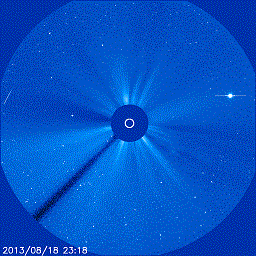
© Jupiter Images/ThinkstockAdvanced warning. Do early signs of suicide risk run in the blood?
What if a psychiatrist could tell whether someone was about to commit suicide simply by taking a sample of their blood? That's the promise of new research, which finds increased amounts of a particular protein in the bloodstream of those contemplating killing themselves. The test was conducted on only a few people, however, and given that such "biomarkers" often prove unreliable in the long run, it's far from ready for clinical use.
Suicide isn't like a heart attack. People typically don't reveal early symptoms to their doctor - morbid thoughts, for example, instead of chest pain - and there's no equivalent of a cholesterol or high blood pressure test to identify those at most risk of killing themselves. "We are dealing with something more complex and less accessible," says Alexander Niculescu III, a psychiatrist at the Indiana University School of Medicine in Indianapolis. So some researchers are eager to find physical signs, called biomarkers, that can be measured in the bloodstream to signal when a person is at a high likelihood of committing suicide.
Over the past decade, Niculescu and his colleagues have been refining a method for identifying biomarkers that can distinguish psychological states. The technique depends on blood samples taken from individuals in different mental states over time - for example, from people with bipolar disorder as they swing between the disorder's characteristic high and low moods. The researchers test those samples for differences in the activity, or expression, of genes for of different proteins. After screening the blood samples, the scientists "score" a list of candidate biomarker genes by searching for related results in a large database of studies by other groups using a program that Niculescu compares to the Google page-ranking algorithm. In previous published studies, Niculescu and other groups have used the technique to probe for biomarkers in disorders such as bipolar disorder, psychosis, and alcoholism.
